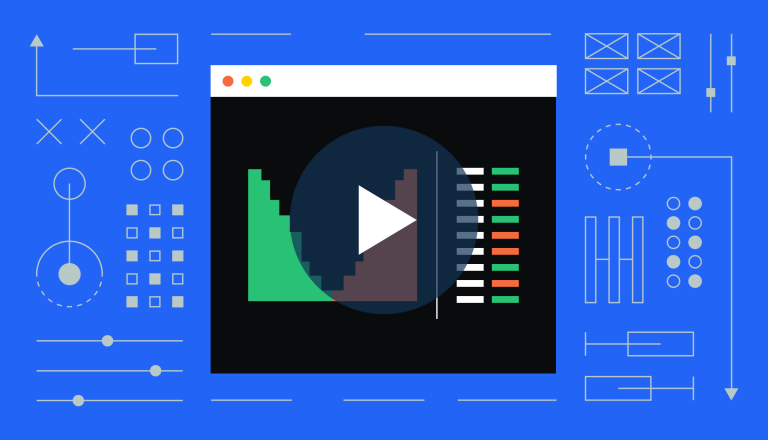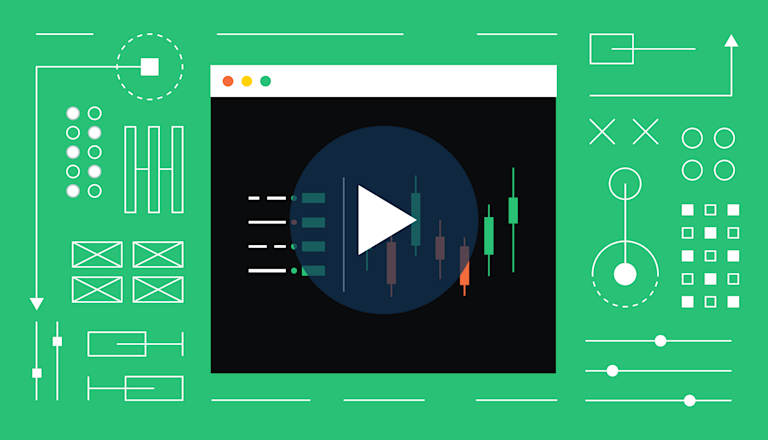How to trade with limit, market, stop-limit, and bracket orders
Learn about order types in part two of our guide to advanced trading tools that let you take greater control of your portfolio.

Coinbase, other crypto exchanges, and stock markets like Nasdaq offer multiple different ways to buy or sell assets — some are simpler and more automated, while others require more knowledge but also offer more control. On Coinbase, for instance, when you navigate to an asset’s page you’ll first see the basic trading interface. This allows you to simply enter an amount and click Buy — your purchase will happen automatically. You can sell crypto from your portfolio in much the same way.
But if you want to take more control over a trade because, for instance, you think prices are going to move up or down in the future — you can toggle to Advanced Trading and manually set your preferred price. To do that, you’ll need to know about a few different types of orders. Let’s dig in.
Coinbase is currently rolling out a suite of Advanced Trading tools, so in this series we’re breaking down some of the functions and terminology you’ll encounter. Much of this information isn’t specific to Coinbase or even crypto, making it useful to learn if you have any interest in markets and trading. We also have a new video series that covers this material in more detail and illustrates exactly how these new tools, charts, and features work if you’re using the Coinbase app or Coinbase.com.
What is an order book?
Definition
An order book, essentially, is a list of current buy orders (also known as “bids”) and sell orders (also known as “asks”) for a specific asset. Order books show not only the price buyers and sellers are willing to pay, but also how many discrete units (as in tokens) they seek to buy or sell at each price.
On Coinbase, billions of dollars worth of buy and sell orders of different types are regularly matched between millions of customers. For each cryptocurrency that’s available via the Coinbase app and on Coinbase.com, you’ll find an order book — which gives you a sense of where the market is moving by showing buy orders (or “bids,” in green) and sell orders (also known as “offers” or “asks,” in red).
Read more about order books in part one of this series
Let’s say BTC is currently trading near $62,000 per coin. You’ll see asks scrolling down from the top in descending order of value. And you’ll see bids scrolling up from the bottom in ascending order of value. The number in the middle is the spread, or the difference between the two.
But because Bitcoin prices can be volatile, you may have a more specific strategy than just buying at the current price. If you believe that BTC is currently too high at $62,000, you can use the Advanced Trading view to set up a limit order to buy 10 BTC at, say, $59,000 each.
Other traders might believe prices are going up. In that case, they might set up a limit order to sell 10 BTC when the price hits $65,000.
Of course, the market may never reach either of those price levels again, so these orders may never be filled. (You can also set a time frame for your order, which is called “Time in Force” — allowing you to specify, for example, how long an order will remain active.)
Let’s take a closer look at the three main order types: market orders, limit orders, and stop orders.
What is a market order?
Definition
A market order is a buy or sell order that executes immediately at the best available market prices.
If you care less about the exact price and more about having your trade executed as quickly as possible, you can use a market order. Market orders typically allow you to buy or sell at the best available market price. For buyers, this will generally be the lowest current ask. For sellers, it will generally be the highest current bid. Market orders are useful if prices are changing fast and you want to enter or exit your position as soon as possible.
That said, market orders may not get you the best price possible, especially if you’re trading large volumes. Slippage happens when there isn’t enough of an asset available at the current market price to completely fill a market order. As a buyer, this can result in part of your order being filled at a higher price.
The act of placing a large order — to buy or sell 1,000 BTC, for instance — could also influence the market significantly, meaning that some of your order could cost much more than the original offer. If you believe the market is moving in a specific direction and you want to buy or sell at a specific price without staring at your screen 24/7, a limit order may be a better option.
What is a limit order?
Definition
A limit order lets you set a maximum price for the order — it will only execute at this price or better.
Let’s say Bitcoin is currently trading near $62,000, but you think it might go lower. If you’d like to wait and buy at a lower price you can set a limit order to buy, say, 0.1 BTC at $60,000 — which would mean you’d pay $6,000 (plus fees) instead of the $6,200 you’d pay via market order.
Limit orders are executed in the order they appear on the order book. Your limit order would only be filled if the exchange can match a seller for $60,000 or below. Of course, there’s no guarantee that the market price will reach $60,000 again, so your limit order may never be filled.
Limit orders are also a good way to trade large amounts because they ensure you’re only paying your preferred price as it becomes available. The downside is that there’s no guarantee your order will be filled, since the market price may never reach the price level you specified.
What is a stop limit order?
Definition
Stop-limit orders allow you to automatically place a limit order to buy or sell when an asset’s price reaches a specified value, known as the stop price. This type of order can help traders protect profits and limit losses.
You can set two different parts of a stop-limit order: the stop price and the limit price. These don’t have to be the same amount, and traders use them together to help manage risk.
The stop price is based on the best available price — not necessarily the price you set. The limit price adds an extra control by setting a more precise price constraint on your trade. With a stop-limit order, your trade will only go through at your desired price or better. There’s no guarantee it will execute.
Let’s say you’ve successfully bought your 0.1 BTC at the $62,000 price. After doing some more research you now believe that BTC could fall below $55,000 — in this scenario, you’d prefer to cash out of your position rather than wait for prices to rebound. You can set a stop price to sell if it reaches $55,000 or below.
Adding a limit price of $54,950 ensures that once the stop price is reached, the limit order, if triggered, will execute at that price or higher. In a fast moving and or low liquidity market, this can protect you from trading at an undesired price. While your portfolio value would drop, selling your BTC via stop-limit order may reduce further losses if prices were to drop even lower.
Or imagine a scenario where, just after you buy, BTC’s price suddenly rises to $69,000 (congrats!). If you think prices could sink again, you can protect some of your gains by setting up a stop-limit order to sell only if the price reaches, say, $65,000. Setting a limit price at the same amount will ensure you’re only selling for $65,000 or better. If the best available price drops below $65,000, your order may not execute completely — or at all.
There’s no one-size-fits-all solution for different order types, especially as crypto prices can be volatile. Each order type has its advantages and disadvantages, and traders should carefully consider which might be right for them.
What is a bracket order?
Definition
A bracket order is an advanced order that allows you to simultaneously set a predefined “limit price” and “stop price” for an asset you already hold. This allows for two opposite limit orders to be set in either direction of price.
A bracket order allows you to let a favorable position continue to run or to get out as soon as possible, mitigating further potential losses in volatile markets. Let’s say you currently hold 1 BTC and the current market price is $62,000. To mitigate risk, you decide to place a bracket order for 1 BTC. You first set a limit price of $65,000. This means that if the market price of Bitcoin reaches $65,000, a limit order to sell 1 BTC will be placed at that price or better. You then also set a stop price at $59,000. This means that if the market price of Bitcoin drops to $59,000, a market sell order for 1 BTC will be triggered to help limit potential losses. Depending on which order is triggered first, the other order will be canceled automatically to help you manage risk effectively.
A stop-limit order is different from a bracket order since it primarily focuses on setting a stop price (when the order becomes active) and limit price for a single order.
Disclosure
Coinbase offers simple and advanced trading. Advanced trading is for experienced traders and is subject to the Trading Rules. Fees on the two platforms vary. Content is for informational purposes and is not investment advice. Investing in crypto comes with risk.


